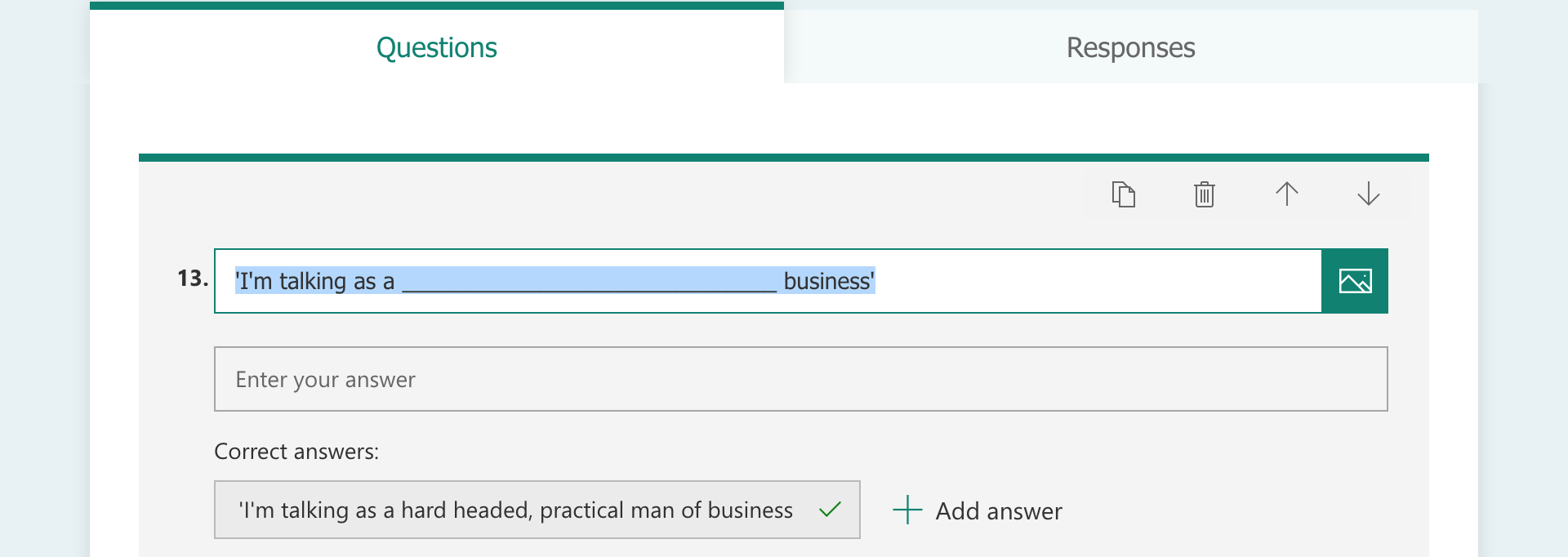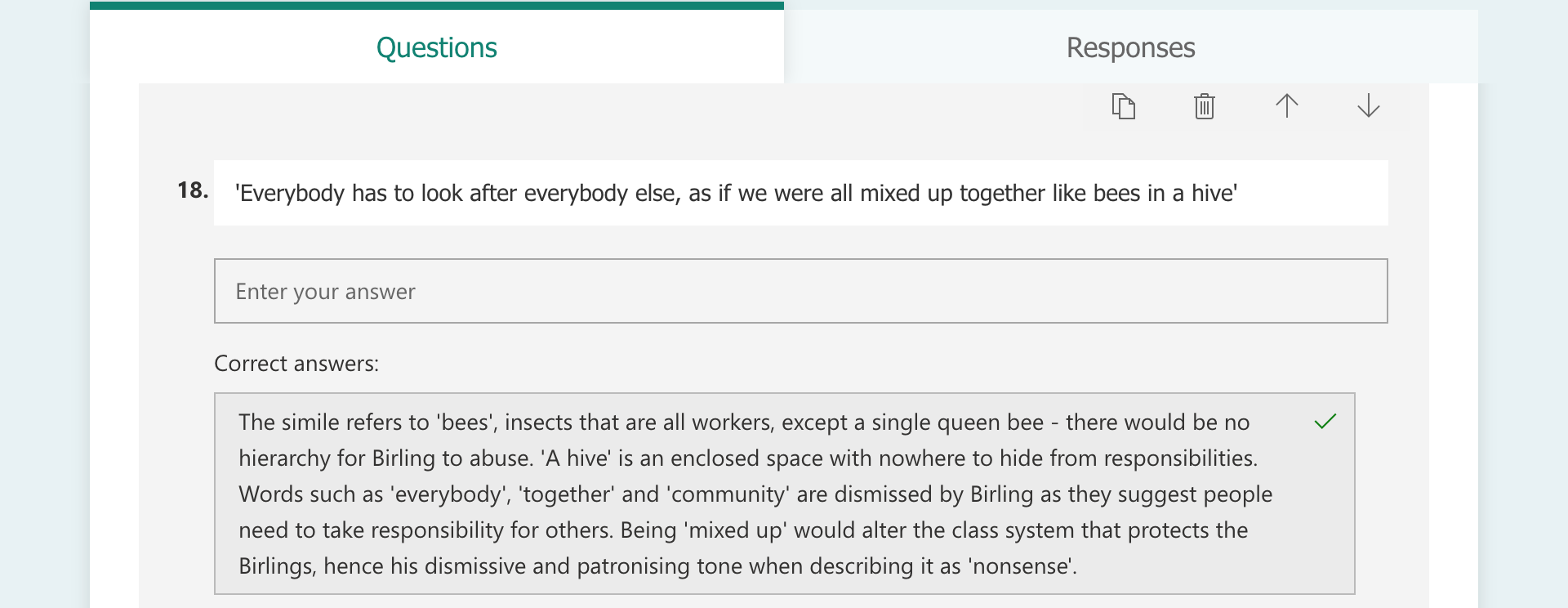Using Microsoft Forms to Encourage Generative Learning
Over the last few months, with the need to provide a consistent, reliable and challenging curriculum, not only in the classroom but also for those at home self-isolating, blended learning has gained prominence in my practice. So, I’ve been keen for my GCSE students (14 - 16 year olds) to gain as much practice as possible in order to achieve mastery by breaking down complex analytical skills to small steps (Rosenshine, 2012). Classroom time is limited, therefore my scheme of work utilises home-learning for distributed practice which aids long term memory retention (Kirschner & Hendrick, 2017), recalling information and practising skills from previous modules. This practice should involve both recall of facts as well as tasks that inspire generative cognitive processes (Mayer, 2014). The school Virtual Learning Environment, Microsoft Teams, provides an opportunity to create online quizzes through Forms.
The core aims of this learning process was to provide students with consistent remote learning, as well as providing opportunities for generative learning while at home. I broke down these aims to:
1. Students can complete any quiz or task multiple times and independently
2. The same quiz could be used across multiple classes
3. It could be set as homework and submitted digitally
4. It would require zero marking as feedback would be built into it
5. Allow students to generate more extended responses and practise writing
6. Encourage self-assessment and evaluation, cultivating the student’s metacognitive awareness of their current performance
The first three were fulfilled by the software itself, while the fourth allowed me opportunities to probe students' understanding outside the classroom. I often like to begin with a small section on basic plot details and biography, which will help me to assess at a glance if there are any fundamental misconceptions across the class. These will often, but not always, be MCQ . It seemed that the benefits for the learner self-quizzing on paper would be immediate feedback, vital in developing expertise (Klein and Kahneman, 2019). An approach which aligns with behaviourism - providing teacher led stimulus in order to achieve a specific result (Bower, 2017). Furthermore, the questions break down complex tasks such as essay writing into manageable small steps, ensuring the cognitive load is managed (Rosenshine, 2012) and there are no misinterpretations which can happen in written down homework. The multiple choice design also clarifies any misconceptions, which would feed into my future teaching.

As the quiz progressed, I focussed on key quotations from their set texts, challenging them with gap-fill activities. This provided a loose form of scaffolding for them and a form that they would be familiar with in class. However, using the blended learning approach, this provides them with focussed practice as they work on retaining the quotations in long term memory. Again, I can see which quotations they are struggling with at a glance.

However, is this really technological enhanced teaching? Certainly, the technology ensures the practice is focussed and well-defined. It also aids mastery, overcoming the limited time in the classroom. As for me, it makes teaching far more efficient in checking for misconceptions. Yet, my last two aims were more problematic.
In order to address these last two aims, I typed in key quotations from the set texts and asked them to analyse them as we would have done in class. There is no ‘right’ answer offered, yet when students had completed their analysis and submitted, they would see possible ideas which they could have included. From this, they are asked to self-assess their response: did I make similar points? Did I miss anything out? Did I use the correct terminology? The aim is not for them to learn parrot fashion this exemplar response, but rather to use it as a concrete point of reference to better reflect on their own response. It is allowing open-ended analytical writing whilst still automating the feedback process. There is no essential need for me to comment on each response (although Forms does have this capacity), but they are still able to generate more sustained analysis, which is really valuable.

Ideally, I would like to insert the opportunity for students to use a likert rating when reflecting on their analysis before they see the suggested response. I believe this would encourage valuable self-assessment - a key metacognitive function (Andrade, 2010), while also giving me an insight into their perception of success. However, overall, this home learning process should provide the students with a positive experience: learning at their own pace, in their own time while also effectively supporting classroom activities. Blended learning at its best.
Reference List
Bower, M. (2017) Design of Technology Enhanced Learning. United Kingdom: Emerald House Publishing. Available via the Vitalsource Bookshelf. [Accessed: 5th November].
Kirschner P. A. & Hendrick, C. (2020) How Learning Happens. 1st ed. Oxon: Routledge.
Kahneman, D. & Klein, G. (2009) Conditions for Intuitive Expertise: A failure to disagree. American Psychologist 64(6). 515-526.
Mayer, R. E. (2014) introduction to Multimedia Learning in: Mayer R.E. (ed) The Cambridge Handbook of Multimedia learning. New York: Cambridge University Press. 1 - 24
Rosenshine, B (2012) Principles of Instruction: Research-Based Strategies That All Teachers Should Know. American Educator 36(1): 12-19. Available from: https://eric.ed.gov/?id=EJ971753 {Accessed January 14th 2020].